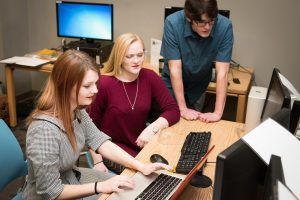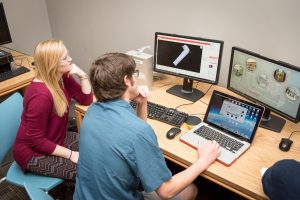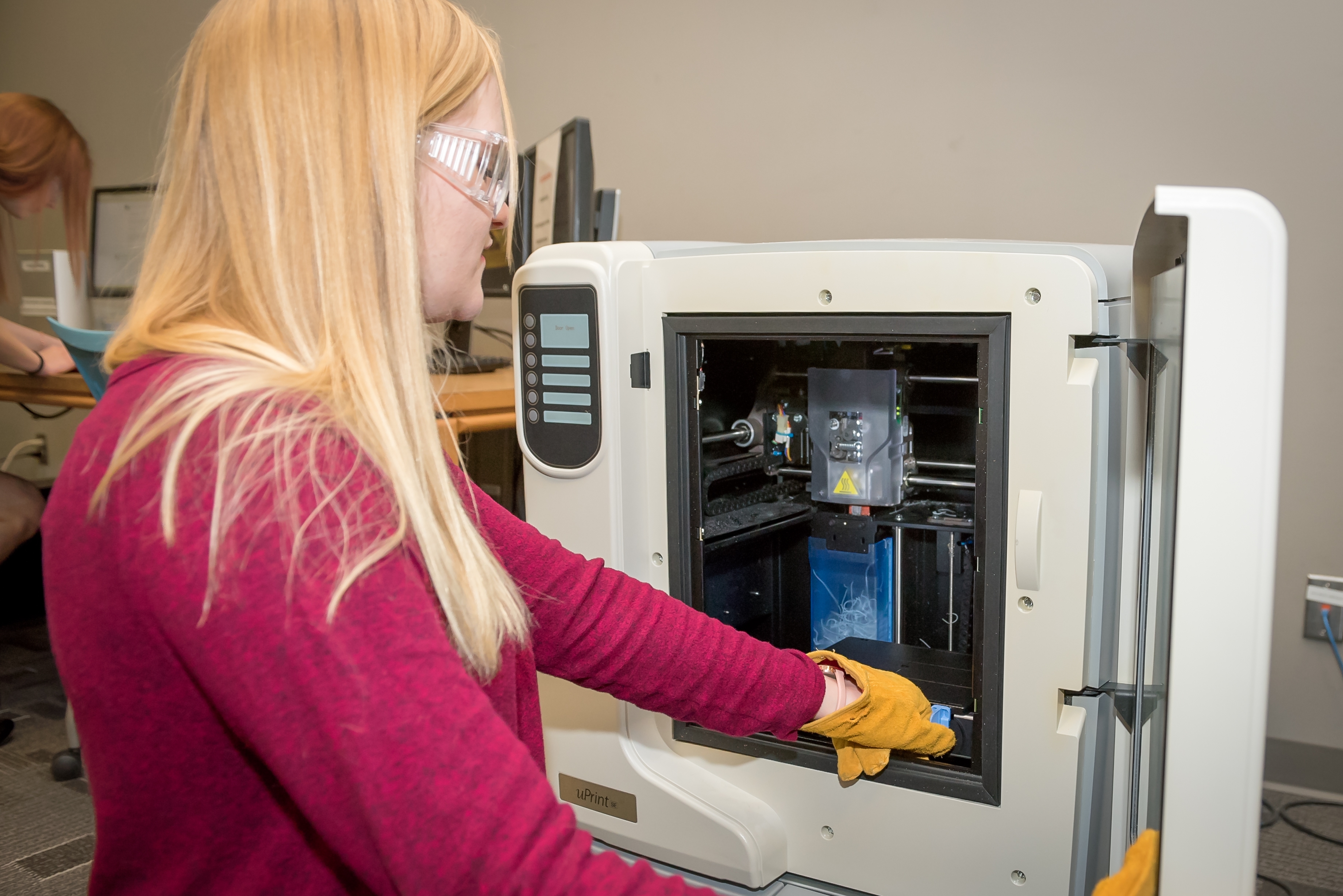Note to editors/producers: Students will cast the sword hilt at 12:30 p.m. Wednesday, March 8, in the engineering foundry. Reporters/photographers are invited to watch this process, take photos/video and interview the students. Anyone attending must wear long pants and close-toed shoes. Safety glasses will be provided. Contact Kim Eaton (print media), 205/348-8325 or kim.eaton@ua.edu, or Shane Dorrill (broadcast media), 205-348-8319 or shane.dorrill@ua.edu, if you plan to come.

TUSCALOOSA, Ala. — A few University of Alabama engineering majors are recreating a bit of history as part of their senior project.
Working with UA’s Office of Archaeological Research and with the permission of Alabama Power Co., the students — Michael Rose, of Kennesaw, Georgia; Danny Massie, of Belleville, Illinois; Hanna Hefley, of Memphis, Tennessee; and Maggie Saylor, of Millsboro, Deleware; all metallurgical and materials engineering majors in Dr. Subhadra Gupta’s class — have spent the past five months researching and developing a plan to create a replica of an 18th century British Hanger rapier that has been part of UA Museums for the last half century. It’s studied as part of the history of the state and founding of the nation.
The sword was supplied to both the British Navy and infantry and likely traded or gifted to a member of the Creek sometime in the early to mid-1700s, said Matt Gage, executive director at UA’s Office of Archaeological Research.
It was recovered in 1962 on the banks of the Coosa River by two young men, Ross Morrell, who later became the archaeologist for the state of Florida, and Carey Oakley, who later founded OAR.
At the time, Alabama Power asked the University to assist in addressing archaeological sites that would be affected by the construction of H. Neely Henry Dam and the creation of a series of lakes along the Coosa.
The sword was intact with a bronze hilt and a blade so rusty that it disintegrated upon exposure to the air, but not before being photographed and documented.
OAR’s Jeremiah Stager had developed a three-dimensional model that allowed researchers to see the artifact’s details without handling the object. He also tracked down a historic sword collector with an identical weapon, which provided information about the length, width and form of the blade.
These details have proved invaluable to the engineering students who will soon be casting the hilt and forging the blade.

Using three-dimensional imagery developed through a technique called photogrammetry, the students made a 3D image of the hilt. Working with Stager, Hefley, 22, was responsible for creating and printing the 3D models that were used to create the cast, a process that has “significantly improved” her modeling abilities, she said.
The next step was creating rubber molds in preparation for the bronze casting. Finally, Rose, 21, and Massie, 21, will forge the blade, a new skill for both of the young engineers and one they are eager to learn.
More than replicating a piece of history, this project has provided real-world experience that the students can use in their future career endeavors.
“It’s been a great culmination of all of the classes that we have taken, and it’s a great way to put that into practice before entering the working world and learn some additional skills that haven’t been covered,” Hefley said. “This project is making me into a better, more well-rounded engineer.”
The newly made sword will be used for display purposes and to highlight the story of the Creek people in Alabama, and it’s just in time for Alabama’s Bicentennial.
“Having an opportunity to work with the artifact brings together the world of historic metal working, the study of archaeology and the history of Alabama,” Gage said.
Contact
Kim Eaton, UA media relations, 205/348-8325 or kkeaton@ur.ua.edu
